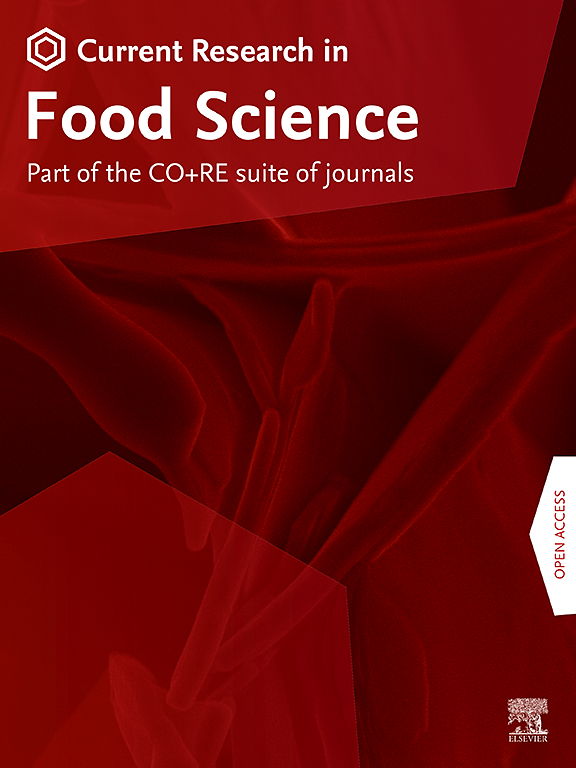Gas chromatography–ion mobility spectrometry-based fingerprint analysis of volatile flavor compounds in ginger cultivated under different conditions
IF 6.2
2区 农林科学
Q1 FOOD SCIENCE & TECHNOLOGY
引用次数: 0
Abstract
Ginger is widely acclaimed for its pungent aroma, nutritional benefits, and unique pharmacological properties, making it essential in culinary and medicinal applications. This study investigates volatile flavor profile differences in ginger resulting from various cultivation practices. Gas chromatography–ion mobility spectrometry (GC–IMS) was utilized to isolate and identify volatile compounds. Subsequent analyses, including relative odor activity values (ROAV) and multivariate statistical analysis, precisely identified key flavor compounds differentiating organically cultivated ginger from conventional field-grown varieties. A total of fifty-six volatile compounds were identified, comprising 17 esters, 4 alcohols, 7 ketones, 18 terpenoids, 6 aldehydes, and 4 miscellaneous compounds, with esters and terpenoids constituting over 50 % of total volatiles. Compounds such as α-phellandrene, β-citronellal, butyl 2-propenoate, 2-heptanone-D, and 3-octanone predominantly contributed lemon, banana, and citronella notes in organically cultivated ginger. In contrast, citral dominated in conventional ginger. This research significantly advances our understanding of ginger's aroma under varied cultivation conditions and demonstrates GC–IMS's utility in effectively profiling ginger flavor, thereby guiding improved cultivation and management.

求助全文
约1分钟内获得全文
求助全文
来源期刊

Current Research in Food Science
Agricultural and Biological Sciences-Food Science
CiteScore
7.40
自引率
3.20%
发文量
232
审稿时长
84 days
期刊介绍:
Current Research in Food Science is an international peer-reviewed journal dedicated to advancing the breadth of knowledge in the field of food science. It serves as a platform for publishing original research articles and short communications that encompass a wide array of topics, including food chemistry, physics, microbiology, nutrition, nutraceuticals, process and package engineering, materials science, food sustainability, and food security. By covering these diverse areas, the journal aims to provide a comprehensive source of the latest scientific findings and technological advancements that are shaping the future of the food industry. The journal's scope is designed to address the multidisciplinary nature of food science, reflecting its commitment to promoting innovation and ensuring the safety and quality of the food supply.
 求助内容:
求助内容: 应助结果提醒方式:
应助结果提醒方式:


